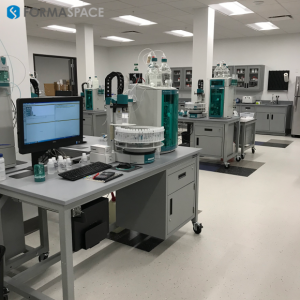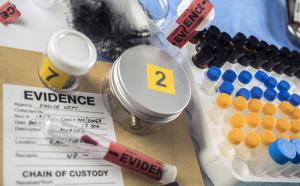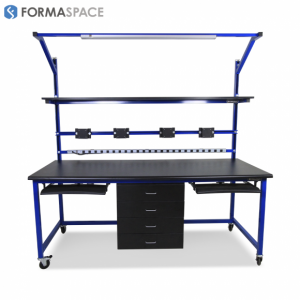12 FUTURE TRENDS FOR FORENSIC TESTING LABS

Formaspace manufactured these custom mobile workstations to meet the exact needs of a famous name laboratory client.
Take a look at 12 emerging trends that will help forensic science professionals enhance their reputation for trustworthiness, accuracy, and accountability.
We look into the top twelve emerging trends in forensic labs industry from lab design to cyber security. Find out more today.”
AUSTIN, TEXAS, USA, August 10, 2020 /EINPresswire.com/ -- To misquote Shakespeare, “now is the summer of our discontent.”— Formaspace
By all measures, the summer of 2020 has been a difficult one across the board.
For forensic science professionals, who recognize the importance of maintaining the public’s trust, two issues have moved to the forefront as a result of the Coronavirus pandemic.
The first is a renewed public interest in the important role of laboratory science, no doubt in part due to the newsworthiness of Covid-19 lab testing ramping up across the country.
Despite the early missteps in rolling out a virus testing program here in the US, domestic opinion surveys continue to show that the public maintains a relatively constant, high level of trust in science and scientists, and, by extension, laboratory research.
(Of course, there continued to be naysayers who deny the conclusions of medical scientists as well as those who actively seek to promote medical conspiracy theories, but, if polls are correct, these groups are in the minority.)
The second issue that has come to the forefront this year is a renewed spotlight on social inequality, which has posed serious questions, such as whether there is fair and equal access to the justice system for everyone.
Given that forensic testing labs often play an important role in providing expert evidence in court cases, laboratories may yet be called out and drawn into this national debate.
You may ask, why do we bring these two issues up at all?
The answer is simple: with greater scrutiny comes a greater need for higher standards of trustworthiness, accuracy, and accountability.
So, as we look into the future to identify the top twelve emerging trends in forensic science, we believe that reputation management is the key to success and that maintaining the highest possible levels of trust with the public is the most important goal of all.
Building Forensic Testing Labs For The Twenty-First Century
1. Follow Best Design Practices For Forensic Testing Labs
Designing a successful forensics testing laboratory is especially challenging thanks to the number of “laboratories within a laboratory” that is typically required.
For example, a crime laboratory tasked with investigating the full gamut of criminal activity could have an on-site biology lab, a chemistry lab, a toxicology lab, trace evidence and fingerprint labs, as well as a ballistics testing laboratory.
Several of these will require their own specific sections as well, such as wet labs with built-in sinks and fume hoods for performing chemical analysis on evidence samples, dry labs (such as instrumentation and IT labs) for performing microscopic analysis or accessing computer databases, as well as secure storage areas to hold evidence within a secure chain of custody.
Architects and designers seeking to achieve a higher standard for laboratory design and construction should turn to the “best practices” recommendations developed by the National Institute of Standards and Technology (NIST).
Among its many recommendations, Appendix B of this document provides a detailed list of design considerations that can be used as a comprehensive checklist when developing the architectural programming requirements when constructing a new forensics testing lab, remodeling an existing lab, or converting an existing facility into a new laboratory.
A couple of caveats: as NIST wrote these recommendations prior to the Coronavirus pandemic, it does not include specific recommendations for establishing social distancing in the laboratory, nor does it address the latest recommendations for filtering ambient air through HEPA filters to circulate throughout common areas of a building, such as the hallways, restrooms, or office environments.
2. When It Comes To Forensic Lab Furniture, Mobility = Flexibility
The second key design trend for forensic laboratories is flexibility.
Read more...https://formaspace.com/articles/wet-lab/12-future-trends-for-forensic-testing-labs/?utm_campaign=article-080520&utm_medium=content&utm_source=einpresswire
Corey Hilton
Formaspace
+1 512-279-2792
email us here
Visit us on social media:
Facebook
Twitter
LinkedIn



